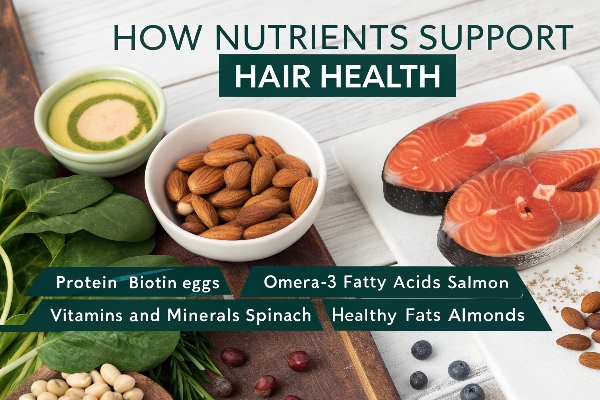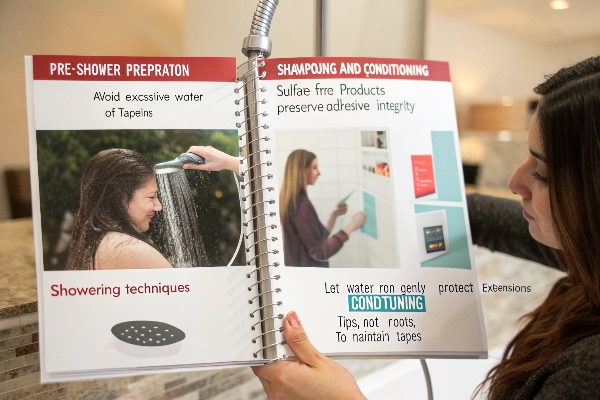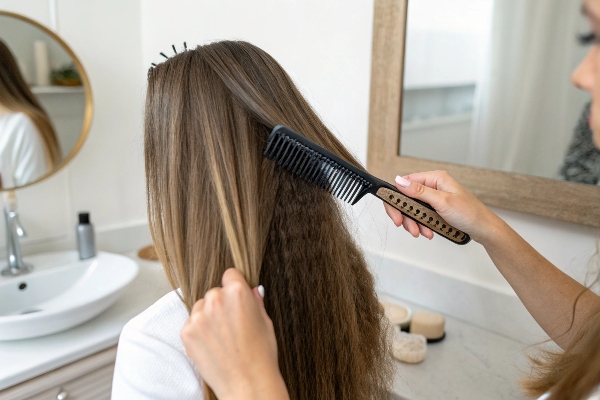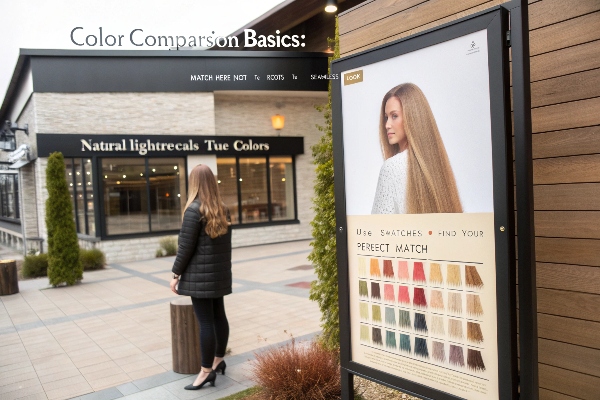Comfort evolves with wear. Do extensions adjust?
Hair extensions typically become more comfortable as you get used to them. Initial tightness fades, and familiarity with maintenance routines enhances comfort.
Adaptability triumphs in this journey; familiarity significantly reduces initial discomfort, providing ease with each wear. With time, you’ll learn to identify the best practices for securing your extensions without compromising comfort. The right techniques and a bit of patience go a long way in ensuring that extensions blend seamlessly with your natural hair, allowing you to enjoy your new look without distraction. Ultimately, this evolving comfort enhances your overall experience, making hair extensions a delightful and transformative addition to your hairstyle.
How Long Are Extensions Uncomfortable?
Duration of discomfort concerns users. How long does adjustment take?
Extensions may be uncomfortable for the first few days. As your scalp adjusts, any tightness or soreness should diminish.
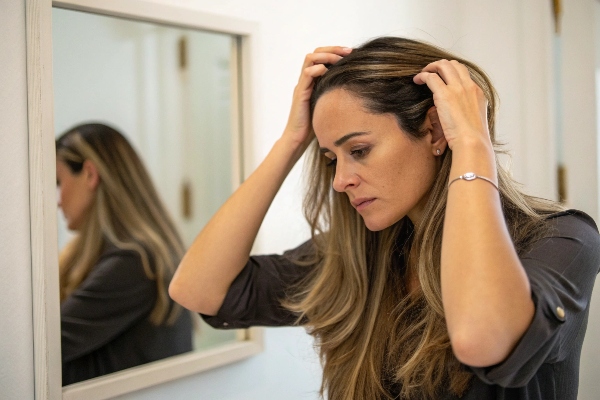
Extensions may be uncomfortable for the first few days as your scalp adjusts to the new weight and texture of the added hair. It’s not uncommon to experience some tightness or soreness during this initial phase, especially if you’re not accustomed to wearing extensions. However, it’s important to remember that this discomfort is typically temporary. As your scalp gradually acclimates to the change, any tightness or soreness should diminish significantly.
How Long Does It Take for Hair Extensions to Settle?
Settling impacts wear experience. What’s the timeline?
Extensions usually settle within a week. During this time, the scalp adapts, making them feel more natural.
Adaptation completes swiftly. Most users find that by the end of the first week, the nerves in the scalp and the hair follicles have adjusted significantly, resulting in a much more natural feeling. This transition enhances your confidence as you explore different styles and looks, freely moving and styling your hair without the worry of discomfort.
Many people report that once the initial adjustment period is over, the overall experience of wearing extensions becomes effortless, almost as if they were always a part of their hair. With a little patience during the first few days, you unlock the full potential of your extensions, leading to an enjoyable and transformative hair experience that can elevate your look for various occasions.
Do Extensions Feel Tight at First?
Initial tightness concerns many. Is this commonplace?
Extensions can feel tight initially due to new attachment. This sensation lessens as they integrate with natural hair.
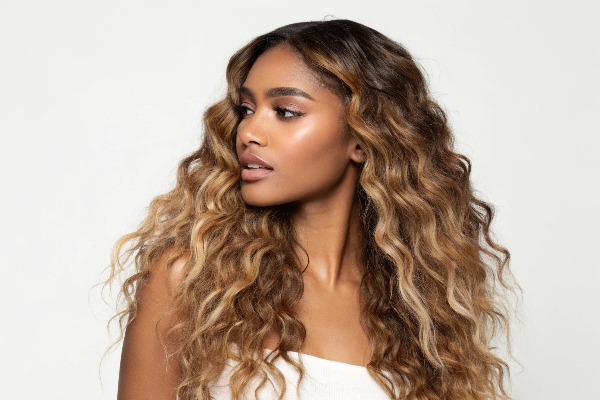
As you wear your extensions throughout the day, they begin to integrate with your natural hair. Your scalp gradually acclimates to the sensation, and the initial tightness will diminish significantly. Many users find that after just a few days, their extensions feel much more comfortable and secure, seamlessly blending into their natural hair. This integration allows for a more relaxed feel, enabling you to move freely without feeling any unnecessary tension.
Is It Bad to Wear Extensions Every Day?
Daily wear prompts care questions. Is constant use harmful?
Wearing extensions daily isn’t bad if you manage them correctly. Proper care reduces risks associated with continual use.
Manage with care. Routine attention is key to preventing damage from everyday wear. Start by choosing high-quality extensions that are suited to your hair type and texture, as these will often integrate better and require less maintenance. Additionally, it’s important to establish a gentle washing and conditioning routine that caters to both your natural hair and the extensions. Use sulfate-free and hydrating products to help preserve the hair’s moisture and prevent dryness or tangling.
How Long Will My Head Be Sore After Extensions?
Post-installation soreness worries users. Is pain enduring?
Soreness is typical after installation, lasting a few days. Gentle care and avoiding strain aids recovery.
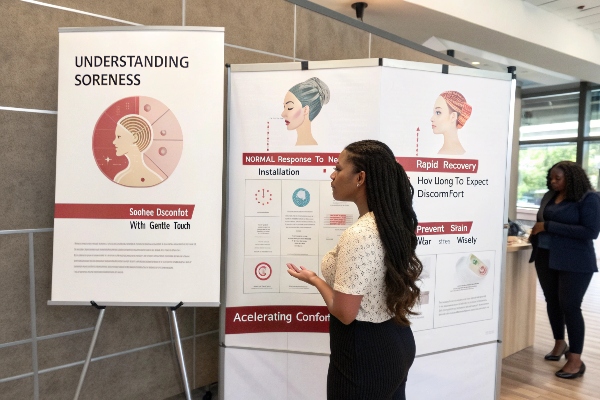
Recovery accelerates swiftly. With a little time and gentle care, you’ll find that the soreness begins to dissipate sooner than you might expect. Taking proactive steps to handle your hair delicately can make a significant difference. Avoiding tight hairstyles and minimizing pulling or tugging at the roots will aid your scalp in its recovery process. Opt for loose styles, such as soft braids or a low ponytail, which can provide comfort while still looking chic.
How to Sleep with Hair Extensions at Night?
Night care preserves health. What’s the optimal routine?
Sleeping with extensions requires a silk pillowcase or a loose braid to prevent tangling and reduce friction, maintaining extension longevity.
Protect nightly. Silk and braids safeguard extension integrity during sleep.
Do Extensions Hurt the First Night?
First-night discomfort is common. Is pain typical?
Extensions might cause slight discomfort on the first night as your scalp adjusts. Proper positioning reduces unease.
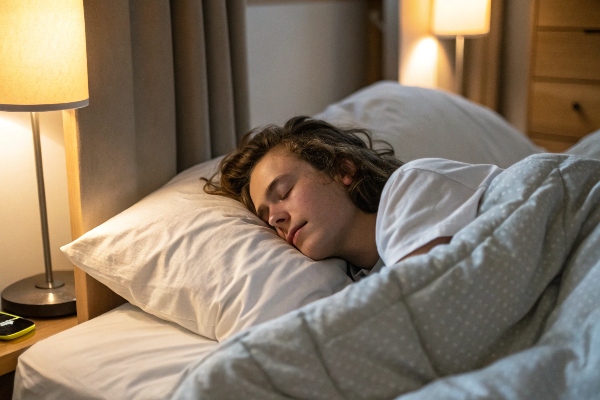
Anticipate initial sensations. Strategic placement alleviates first-night discomfort.
How Do I Look After My Hair Extensions for the First Time?
Initial care dictates lasting quality. What steps ensure protection?
Gently brush extensions with a soft-bristle brush, avoiding roots. Use sulfate-free products and avoid excess heat to maintain quality and prevent damage.
Gently brushing extensions with a soft-bristle brush and avoiding the roots ensures minimal tension and prevents damage. Complement this care with sulfate-free products to maintain hydration and health. Additionally, minimizing heat exposure allows your extensions to remain vibrant and durable, ensuring they look beautiful and last longer with proper maintenance.
Conclusion
Understanding timelines and care guides your extension journey. With patience and proper routines, initial concerns ease, ensuring comfortable and healthy wear.

